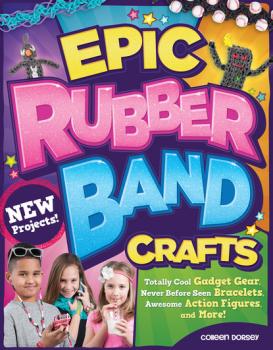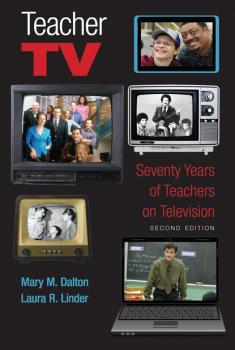Учебная литература
Различные книги в жанре Учебная литератураLearner-Focused Feedback
New strategies for feedback that supports a culture of learning. The skill set required for observing why students are learning and how teachers influence that is a difficult one to master—yet it’s essential for driving school change and growth. With this companion to the best-selling Feedback to Feed Forward , observers in any role—leaders, coaches, and teachers themselves—will improve their ability to identify desired outcomes, recognize learning in action, collect relevant evidence, and develop supportive, and effective feedback. Features include: · Nineteen strategies for learner-centered, learning-focused observations · Authentic classroom examples · Observer think-alouds · Stories from the field with “Give-It-a-Try” tools and “Stop and Think” questions Follow-up steps specific to each role
Balance With Blended Learning
Rethink the roles, responsibilities, and workflow in your blended learning classroom and enjoy balance in your life. Blended learning allows a partnership that gives teachers more time and energy to innovate and personalize learning while providing students the opportunity to be active agents driving their own growth. Balance With Blended Learning provides teachers with strategies to actively engage students in setting goals, monitoring development, reflecting on growth, using feedback, assessing work quality, and communicating their progress with parents. It includes Practical strategies for teachers who are overwhelmed by their workloads Vignettes written by teachers across disciplines Ready-to-use templates to help students track their progress Stories from the author's experience as a teacher and blended learning coach
Visioning Onward
Envision and enact transformative change with an iterative visioning process, thought-provoking vignettes, case studies from exemplary schools, key strategies and tools, and practical implementation ideas.
The Food We Eat, the Stories We Tell
Blue Ridge tacos, kimchi with soup beans and cornbread, family stories hiding in cookbook marginalia, African American mountain gardens—this wide-ranging anthology considers all these and more. Diverse contributors show us that contemporary Appalachian tables and the stories they hold offer new ways into understanding past, present, and future American food practices. The poets, scholars, fiction writers, journalists, and food professionals in these pages show us that what we eat gives a beautifully full picture of Appalachia, where it’s been, and where it’s going. Contributors: Courtney Balestier, Jessie Blackburn, Karida L. Brown, Danille Elise Christensen, Annette Saunooke Clapsaddle, Michael Croley, Elizabeth S. D. Engelhardt, Robert Gipe, Suronda Gonzalez, Emily Hilliard, Rebecca Gayle Howell, Abigail Huggins, Erica Abrams Locklear, Ronni Lundy, George Ella Lyon, Jeff Mann, Daniel S. Margolies, William Schumann, Lora E. Smith, Emily Wallace, Crystal Wilkinson
Eco Kids Self-Sufficiency Handbook
Everyone’s interested in becoming more green these days—why should kids miss out on the fun? By cleverly combining creativity with eco-awareness, this timely book encourages children aged 7-14 to put down their mobile devices and get involved. From building a wind turbine and a go-kart to creating light, growing vegetables, and making green gifts, Eco Kids Self Sufficiency Handbook offers a wide range of ways to capture the imagination and make a positive contribution to the world around us. Twenty-eight exciting projects support integrated STEAM learning (science, technology, engineering, art, math). With easy to follow step-by-step instructions and photographs, no project is too difficult for children to complete with adult supervision.
Krazy Kool Kinetic Sand
Discover the awesome possibilities of Kinetic Sand, the sand with superpowers! This amazing futuristic material molds just like wet sand, yet leaves surfaces perfectly clean and dry. Shape it, roll it, slice it, sculpt it, stamp it, or build with it. Then watch it ooze, move, and melt away right before your eyes!Use this book to jump-start your creative process and explore the fun world of super sand. Krazy Kool Kinetic Sand is your guide to imaginative play with this addictively entertaining substance. Experiment, learn, and create with these inspiring activities for castles, pyramids, volcanoes, games, and more. So relax and get your hands in the sand. No beach required!
Hooked on Rubber Band Jewelry
Go beyond the loom with Hooked on Rubber Band Jewelry ! Young crafting prodigy Elizabeth M. Kollmar takes the rubber band jewelry craze to a whole new level, with innovative techniques and totally cool designs. This amazing book shows you how to create dazzling rubber band bracelets and necklaces—without ever using a loom! All you need is a doubleended crochet hook to get started making fabulous bling.Elizabeth takes you step-by-step through every stage of the process, with clear how-to photos and easy-to-follow diagrams. Her simple crochet hook method allows you to work your creations to any length. Learn to expand the possibilities of rubber band jewelry by adding attractive charms, beads, and buttons. Twelve awesome designs offer endless variations for hours of creative fun.
Epic Rubber Band Crafts
This ultimate guide to making rubber band gear shows how to use a Rainbow Loom®, Cra-Z-Loom™, or FunLoom™ to make the coolest and most colorful stuff around. Discover how to put two or more looms together for fabulous results on bigger projects. Kid-friendly step-by-step instructions, hundreds of color photos, and easy-to-follow numbered diagrams make it a snap to get great-looking results. Plenty of fun sidebars, ideas, tips, and tricks are provided to keep any loom enthusiast occupied for hours.
Magic or Science?
Magicians pull off fantastic feats: Levitating a meter above the ground, charming a snake with a flute, finding lost objects with the help of a pendulum, swallowing a sword or walking on embers … But how do they do it? Is it magic or is it science? Learn to question and discover how science can explain most of the secrets surrounding these amazing wonders.Get ready to move to the other side of the mirror!<b>Contents:</b> <ul><li>One, Two, Three, Levitate!</li><li>Pendulum, Astrology, and Other Prophecies…</li><li>Reading Minds? Easy!</li><li>Can You Sit on Nails or Charm a Snake?</li><li>Breaking Metal</li><li>Spirit, Are You There, Probably Not…</li><li>Witchcraft?</li><li>How Do You Walk On Coals Without Getting Burned?</li><li>Beating the Odds</li><li>How Do You Stick a Knife in Your Arm with Your Fingers in Your Nose?</li><li>Phantoms, Ghosts and Other Spooks</li><li>Images That Are a Little too Incredible…</li><li>Bermuda: A Triangle that Doesn't Go Around in Circles</li><li>Circles in Wheat Fields</li><li>When the Oldest Man in the World was a Fake</li><li>Go to Sleep!</li><li>When the Automation's Too Good to Be True…</li><li>Archaeological Mysteries</li><li>Gold Makers</li><li>Strange Constructions</li></ul><br><b>Readership:</b> Children, young adults. Science;Magic;Children;Magic Tricks;Magicians;Phenomenon;History;Learning00
Teacher TV
Teacher TV: Seventy Years of Teachers on Television, Second Edition examines some of the most influential teacher characters presented on television from the earliest sitcoms to contemporary dramas and comedies. Both topical and chronological, the book follows a general course across decades and focuses on dominant themes and representations. Although each chapter presents an overview of the all the teachers on television for each decade, the focus will link some of the most popular shows of the era to larger cultural themes. «1950s Gender Wars: Our Miss Brooks and Mr. Peepers» looks at acceptable behavior for men teachers and women teachers on television and offers a context for making links to how gender is socially constructed in popular culture and in society. The racial tensions of the 1960s take a more implicit form on two series and are examined in «1960s Race and Social Relevancy: The Bill Cosby Show and Room 222.» In «1970s Ideology and Social Class: Welcome Back Kotter and The Paper Chase,» both lower and upper ends of the class spectrum are blunted in favor of storylines that are personal and predictable instead of overtly political. Two popular television sitcoms validate educational privileges for elite students in «1980s Normalizing Meritocracy: The Facts of Life and Head of the Class.» The 1980s reflect a return to conservatism, and two popular television sitcoms mark the transition by validating educational privileges for elite students. The 1990s mark a time of significant change for teachers on television. In «Gaining Ground From Margin to Center: Hangin’ With Mr. Cooper and My So Called Life,» the two featured shows, illustrate the mundane and the provocative in teacher depictions on television. In «Embracing Multiculturalism: Boston Public and The Wire» we use these dramas as exemplars of the 2000s to examine themes such as race, gender, and sexuality, but view them through a new lens. Chapter Eight is new to this edition and looks at the downward spiral in the depiction of educators in popular culture during 2010s and pays specific attention to Madam Secretary and Teachers. The Afterword, which is also new, explores these television texts in the larger socio-political context and makes important links between television narratives and issues of identity, the culture of testing, poverty, and dropping out. We must reestablish the importance of public education and consider its essential role in creating an informed citizenry, which is necessary for the future of democracy. Recent trends represent a dangerously skewed view of educators, and it is essential that we begin to «flip the script»—literally and figurative—to combat the cynicism of today's television narratives and stop the way those stories influence public perceptions of education in America.









